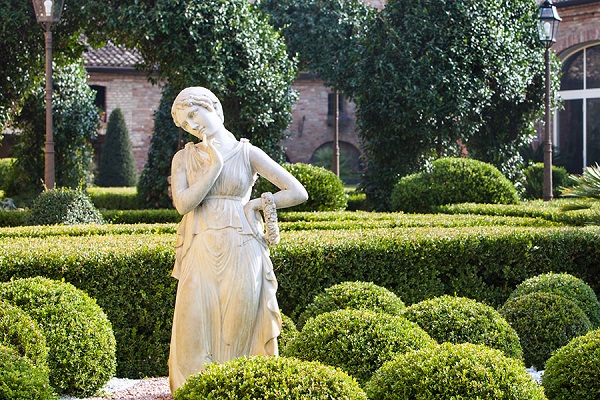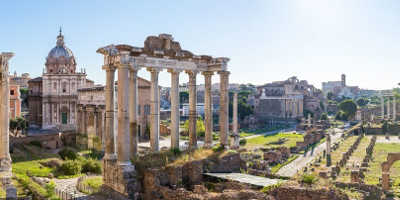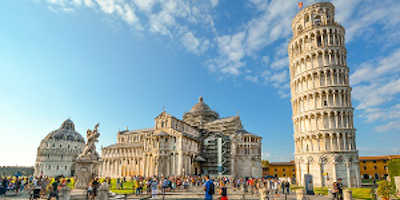What distinguishes an Italian-Style Garden?
If you’re yet to see some of Italy’s botanical beauties, what are you waiting for? Famous for their breathtaking designs, Italian-style gardens have been treasured and preserved for centuries.
When visiting the fabulous country of Italy, most will immediately set off to the famous buildings nestled within. But after seeing the impressive buildings the country is so famous for why not trek outside to see the spectacular gardens attached? Back in the day, art was such an important feature in the country’s existence, with every aspect of their lives decorated. Eventually, the iconic art spread to the outdoors, with gardens bursting with style, meaning, and beauty. Over the years Italy has created its own form and style of garden, with signature designs, layouts, and artwork.
-
Design of the Gardens
The classic Italian garden, also known as the Renaissance garden, was a new style of garden that emerged in the late 15th century at prosperous villas in Rome and Florence. Inspired by classical ideals of order and beauty, Italian gardens were specifically designed with these themes in mind. Unlike the Italian Medieval gardens that came before, which has been inward looking and enclosed by walls, devoted to growing vegetables and medicinal herbs, the Italian Renaissance garden broke down the wall between the garden, the house and the landscape beyond. It’s aim was to look outward, both physically and intellectually. It was not designed for use in the way the Medieval garden was, it’s main purpose was pleasure. Therefore, Italian gardens are styled with a great amount of symmetry, with geometrically shaped squares, rectangles, and triangles carefully manicured and placed throughout the garden. These shapes appeared in flower beds, hedges, beautiful centre pieces, and the layout of concrete paths. As many villas were situated on hilltops, providing excellent views and cooling breezes, the gardens were often layered. The sloped site meant gardens were often laid out on several levels or terraces, connected by paths or short flights of stairs. This offered places to enjoy the surrounding landscape as well as see the garden from above.
-
Set Up of the Gardens
Another basic feature of the Italian garden is as promenade, or formal pathway, that is lined with manicured hedges. Used to stroll the garden, seeing the design from the best perspective, usually being the centre. Its purpose is both to see and to be seen in the garden, actually as a stage and a lookout for the greenery. There may be other paths that lead off from the main promenade, leading to a secret garden. This was an enclosed private space within the garden which provided an intimate getaway space for one to relax and reflect in, or perhaps hold meetings with prominent people. Inspired by the cloisters of Medieval monasteries, the secret garden may just be a vine-draped pergola or tucked away bench. In other instances, Italian gardens would have a grotto, meaning an artificial cave filled with sculptures and furnishings where one could sip wine in a refreshingly cool space.
-
Plants Used
As order and balance were the primary design goals for an Italian garden (a way of illustrating man’s power over nature) the plants easily manicured into geometric shapes were evergreens, meaning the predominant colour tended to be green. Flowers were few, preferring to use more green plants like boxwood, cypress, laurel, yew, rosemary and other common species. Although all green in colour, the array of plants used offered a contrast of light and dark green, and differing textures throughout the garden. This isn’t to say there was absolutely no other colour than green, as Italian also liked to cover stone walls with trellised foliage vines or climbing roses.
-
Water
The sound and cooling effects of water are essential elements of the Italian garden, featuring in fountains, ponds, or cascades. The water is even manipulated to form a certain shape such as an arch, acting as the focal point of the garden. In old Italy, water triggers under the pathways would send water shooting out of hidden pipes when stepped on. A humorous image when you consider that the the Italian garden was intended for deep contemplation and enjoyment. This would have also ruined the desired effect of using water to soften the garden’s geometric shapes, creating a calming and refreshing background.
-
Sculptures in the Gardens
Since the garden was considered an extension of the home, it was decorated in the same manner, with plenty of humorous and graceful art. Sculptures of Roman gods, goddesses and heroes of ancient legends and mythology were common. These were usually places standing it central areas of the garden or as a feature of a grand fountain. Lemon trees potted in urns were also a favourite decoration among residents, as a decoration for the patio of seating area.
The Vatican Gardens
When visiting Italy there are so many gardens you can visit, but the most famous is undoubtedly the Vatican gardens. The garden began in 1279 when Pope Nicholas III planted an orchard, lawn, and garden. Throughout the years the garden grew, with each new pope creating their own section or feature. Nowadays, the garden is immense, having different themed sections, with historic buildings scattered within. Take a tour in this incredible wonderland and see both the history and beauty of the area.
We hope this article has given you a few Italian-style features to look out for, or even inspired you to visit one of Italy’s beautiful Renaissance gardens, as there are so many to choose from! A trip to somewhere like the Borghese Gallery and Garden is definitely worth a tour, as by the middle 16th century, the gardens became even larger, grander and more symmetrical! This was in part caused by the Medicis and other wealthy families who used the gardens to demonstrate their own power and magnificence to visitors.
Related article: What to see in Trastevere?

















